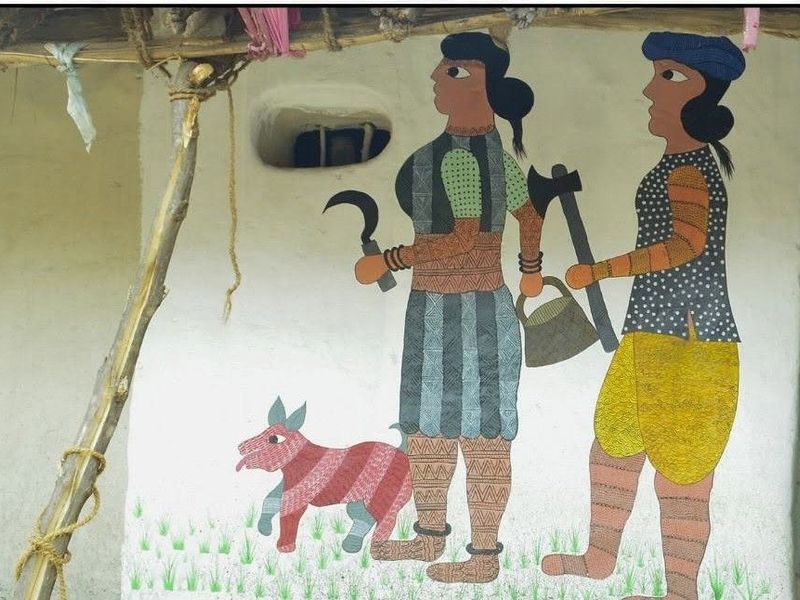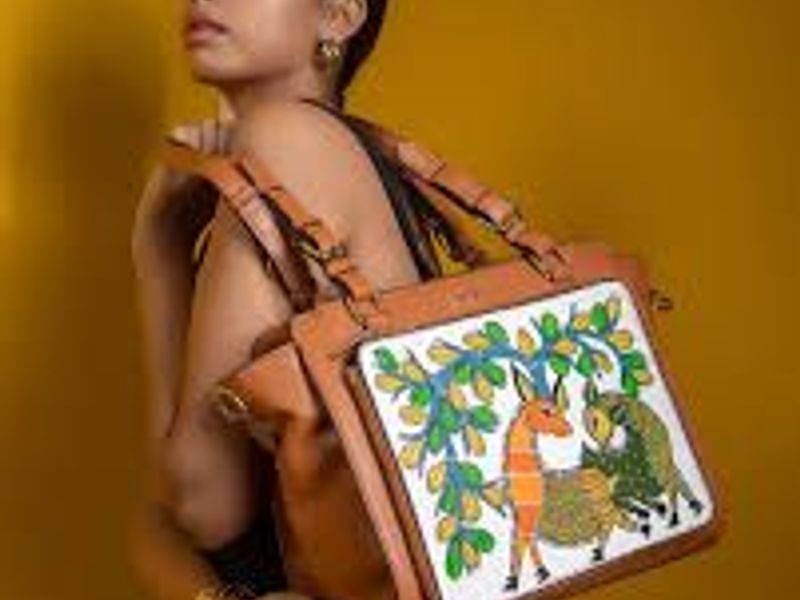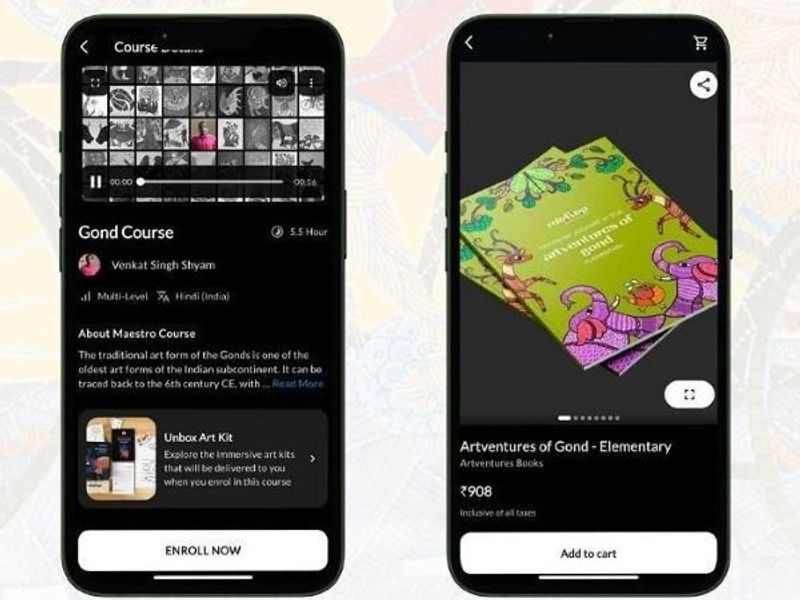Your Cart
Learn Gond, a traditional art form from Central India

Learn the basics of Gond: Indian tribal art from Madhya Pradesh
Have you ever come across Gond art? It’s this mesmerizing style of painting that comes from one of India’s largest tribal communities—the Gonds. Found in the heart of India, in places like Madhya Pradesh and Chhattisgarh, Gond art isn’t just about colors and patterns. It’s about stories. Stories of the community, their gods, their ancestors, and their connection to nature.
So here is a little story about how the traditional Indian art form of Gond art came into being. Back in the day, a special group within the Gonds, called the Pradhan Gonds, were the storytellers. They didn’t just tell stories; they sang them! And as time went on, these songs started to take shape as beautiful, intricate paintings. The beautiful gond paintings.
The best part? Gond artists made everything from scratch. Charcoal, colored soil, plant sap, even leaves—they turned these simple materials from nature into vibrant colors that brought their stories to life. Their paintings are filled with gods, animals, and everyday life, each brushstroke a reflection of how deeply they connect with the natural world.
The patterns in Gond art too have a deeper symbolism. Every dot, every line has a rhythm, a flow, and when you see it all come together in those bright colors, it feels alive. The Gonds believe that a well-crafted image can bring good fortune—and you can feel that energy when you look at their art.
Today, Gond art isn’t just about tradition. It’s a bridge between their rich past and the modern world. It’s their stories, their resilience, and their creativity, all captured on a canvas. And it’s no wonder—it’s captivating hearts all around the globe.
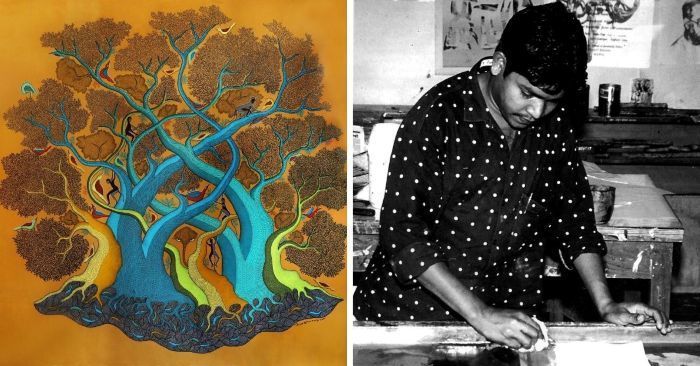
All about Gond art
Gond art, a vibrant expression of the Gond tribe's rich cultural heritage, captivates with its intricate designs and vivid colors. Let's delve into some of the wonderful motifs, themes and colours used to create these beautiful paintings.
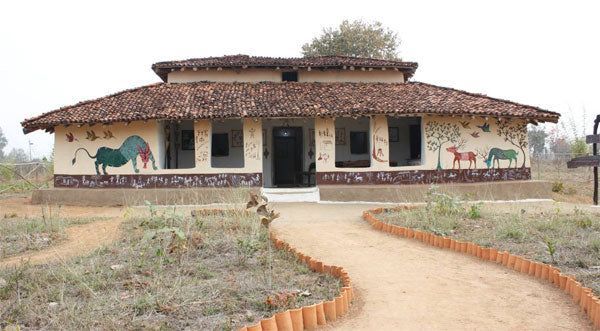
Introduction to Gond Art
Gond art originates from the Gond tribe of central India, particularly Madhya Pradesh. The roots of this artform have also been found in neighbouring states like Andhra Pradesh, Orissa, Maharashtra, and Chhattisgarh. Traditionally adorning mud walls, Gond art, as we know it today, has transitioned to paper and canvas and several other mediums, gaining global recognition.
Image Source: The wall art or bitti chitra on Gond houses in Patangarh illustrates their deities, myths and legends.
Themes and Motifs
This art form narrates folklore, nature, and daily life. Common motifs include animals, trees, and deities, each symbolizing deeper meanings and beliefs. Each symbol and theme in Gond art has a deeper meaning.
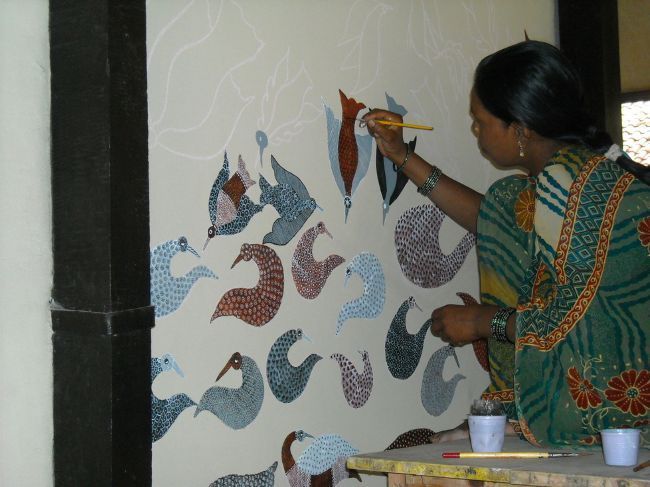
Color Palette in Gond Art
Traditionally, Gond artists used natural pigments derived from nature. The colour palate for Gond art is derived from nature - soil, charcoal, leaves, and flowers all contribute to the wonderful colours of Gond art. The primary colors often included white, red, yellow, and black.
Symbolism of Colors
Each colour in this art form is meant to represent something.
- White: Symbolizes purity and peace.
- Red: Denotes strength and fertility.
- Yellow: Represents the divine and the natural world.
- Black: Often used to outline and define forms, adding depth.
Evolution and Contemporary Adaptations
While rooted in tradition, Gond art has evolved, with artists experimenting with synthetic colors and modern themes, ensuring its relevance in contemporary art circles.
Prominent Gond Artists
Artists like Jangarh Singh Shyam have been pivotal in bringing Gond art to the forefront, inspiring a new generation to explore this traditional form. His nephew Venkat Singh Shyam followed in his footsteps and eventually carved his own niche by mastering Gond art. Rooftop has had the honour to be able to partner with him to make this beautiful tribal art form more accessible for you. Take a workshop to learn the intricacies of Gond art with maestro artist Venkat Shyam Singh.
The dots, lines and dashes in bold colours and patterns Gond art beautifully intertwines tradition with creativity, offering a window into the Gond community's soul and their harmonious relationship with nature. Read on to know more about the beautiful motifs and their meanings in Gond.
3 Motifs used in Gond art
The Tree of Life:
A symbol of growth and connection, the Tree of Life is a central motif in Gond Art. It represents fertility, strength and the Gond community’s deep bond with nature.
Tip: Use flowing branches and intricate patterns to bring your Tree of Life to life!
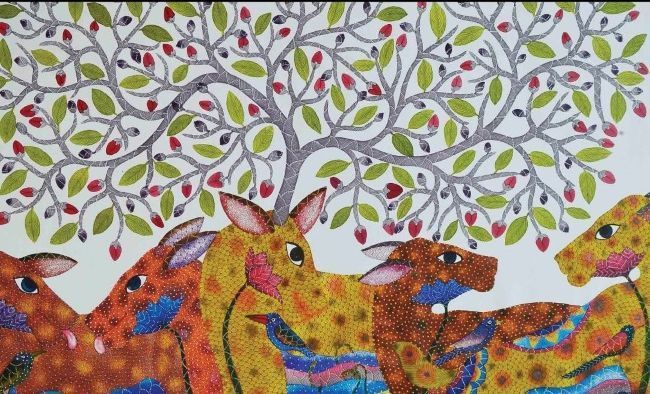
Animals and Birds:
From graceful peacocks to majestic tigers, Gond Art showcases wildlife in vibrant detailed patterns to depict the beauty of the animal kingdom. These motifs symbolize the vitality of life and the Gond people's harmony with wildlife.
Tip: Experiment with bold patterns to celebrate the energy of nature!
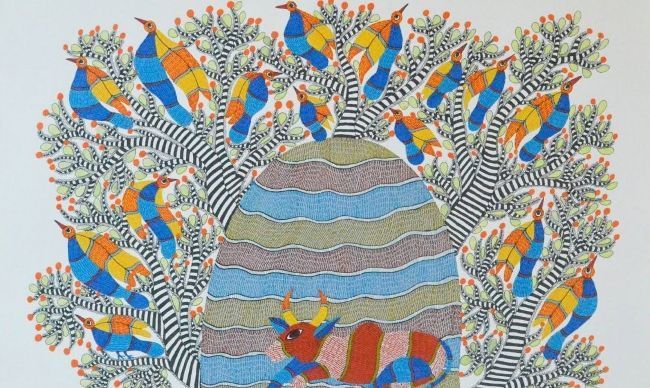
Celestial Elements:
Celestial elements like the sun and moon are key motifs in Gond Art. They represent balance and harmony in life and the passage of time and cosmic rhythm.
Tip: Use radiant strokes to depict these celestial elements with elegance.
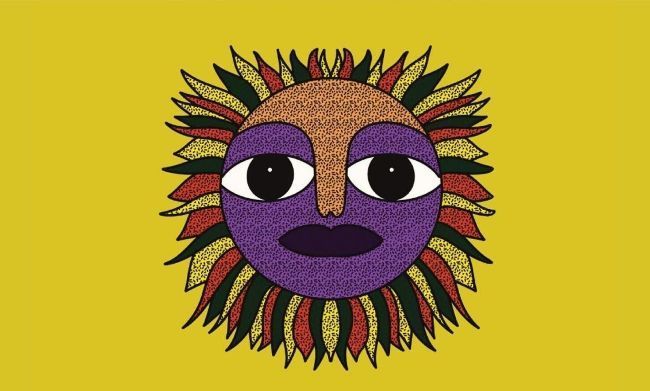
3 Fun ways to add a bit of Gond art to your life!
1. Gond art inspired Home Decor
Incorporate Gond art into your living space through wall hangings, murals, or painted furniture. These pieces add a touch of cultural elegance and showcase your appreciation for traditional art forms.
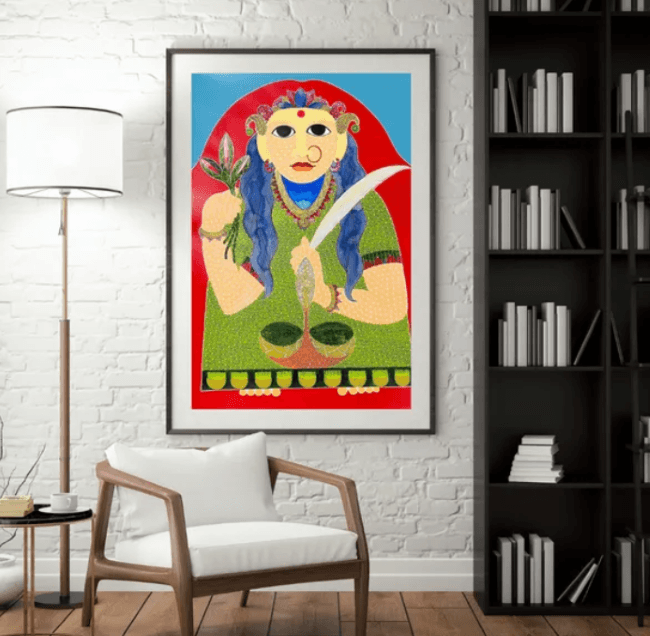
2. Handmade Gond Fashion Accessories
Gond art-inspired designs on scarves, bags, and jewelry can make unique fashion statements. Wearing these accessories not only enhances your style but also promotes indigenous art.
Image Source: Gond art-inspired scarves and bags designed with traditional patterns.
3. Digital Prints - traditional Indian Art
Showcase your Gond art talents by creating digital illustrations for websites, social media, or online marketplaces. Storytelling through Gond paintings in the digital era is a modern approach to ensure this traditional Indian artform has a wider reach and engagement with a global audience.
Want to know more about Gond Art ? check out Rooftop’s Art wiki page for everything you need to know about Gond and other traditional tribal and folk arts!
